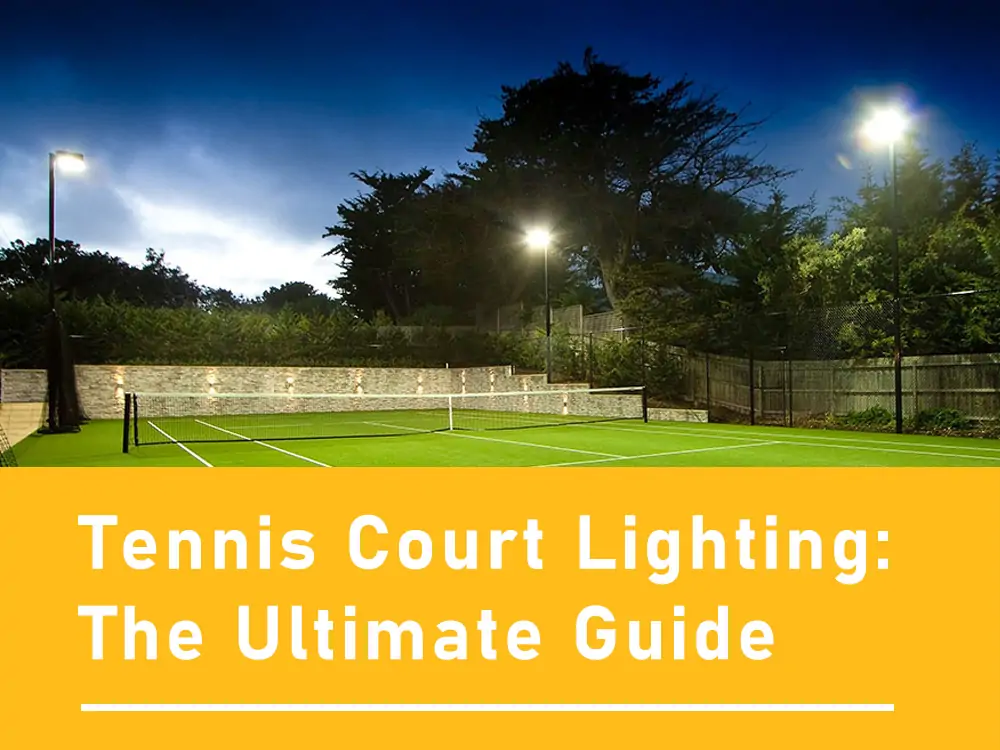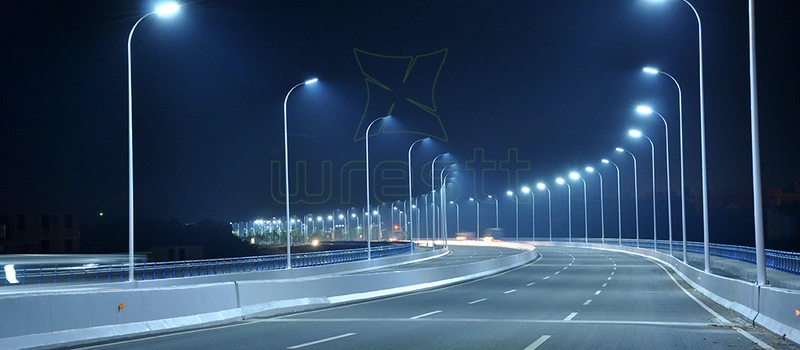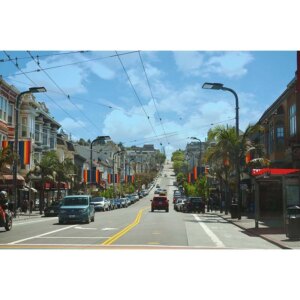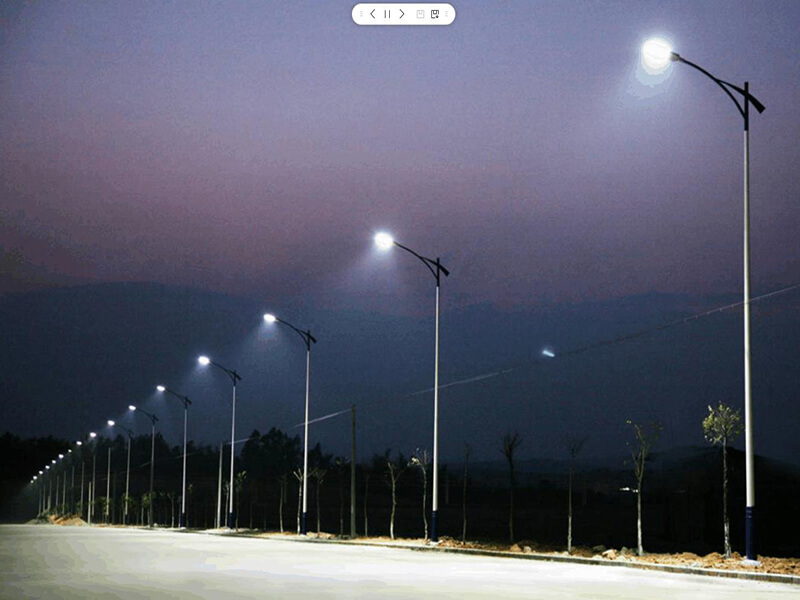By definition, street lights are any raised light source usually at the edge of a road that is the primary illumination source for pedestrians and other street users.
Hanging lamps on the street light pole.
The idea of street lighting dates back to the Greek and Roman civilizations that had oil lanterns scattered all over palaces and streets. The sole purpose of these lights was to provide a sense of security for the natives while keeping potential robbers at bay.
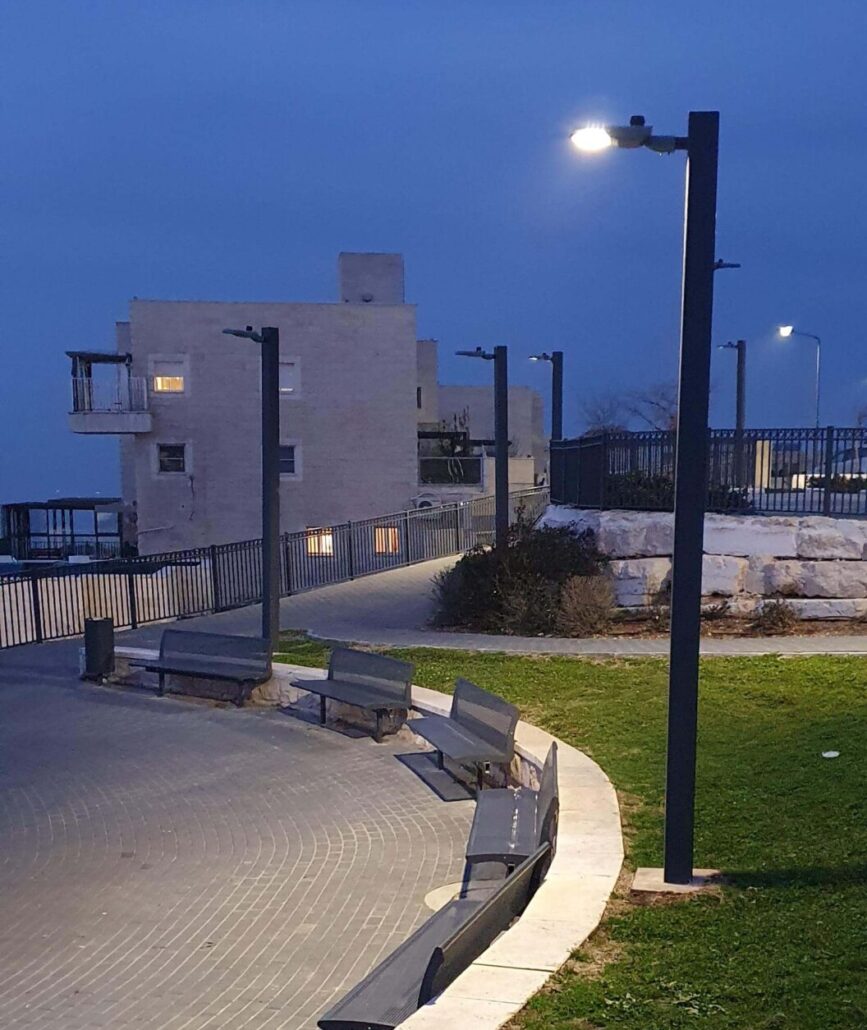
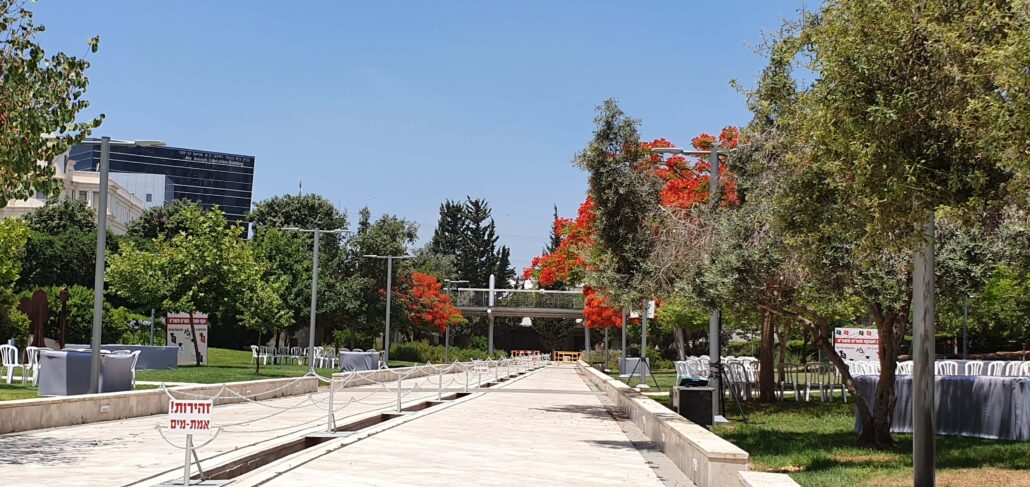
The origin of street lights
The 16th century
By the finish of the 16th century, the concept of public lighting had undergone many reformations from oil lamps to candles and finally to glass lanterns that made the quality of light better. As a result, Paris-France was one of the first cities worldwide to inaugurate public street lighting all over the city.
Led street lamp are an essential aspect of road safety for both pedestrians and drivers, especially during the darker hours of the day. Street lights illuminate the area around a road to help pedestrians feel secure from surprise attacks while also helping drivers quickly recognize their surroundings to avoid accidents.
For drivers, car headlights may not be enough, most especially on busier roads- street lights add that extra layer of security on the road.
However, street lights must by principle cooperate with all the other road equipment without causing overlaps or oversights.
For example, the glare from street lights shouldn’t be too harsh as this can impair drivers when navigating from well-lit to the darker parts of the road.
Led street lamps must also fall within a reasonable height range, and light should be emitted at a flattering angle that reduces the impact of glare and light pollution.
While street lights have many benefits, one of the unavoidable challenges is light pollution. As a result, astronomy lovers are left with a yearning for a clear sky full of stars.
The placement of street lights
According to many countries’ accepted road safety regulations, street lights can be arranged in three principal ways.
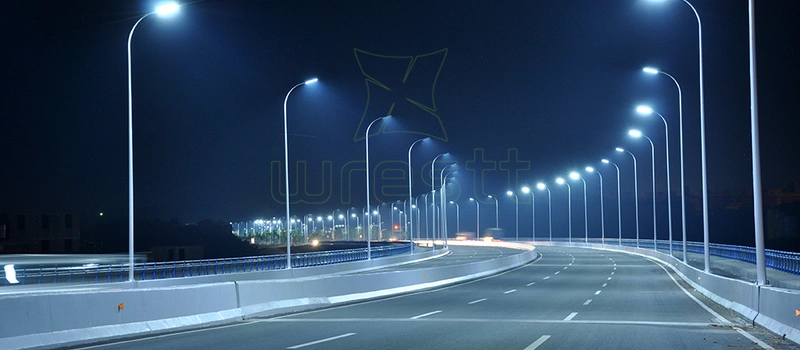
Cross lighting
In this setting, the street lights are evenly spaced at alternating intervals on both sides of the road.
This setting is effective on extensive highways above 20 meters in width as it creates an ambient yet evenly illuminated atmosphere without necessarily creating a glare effect.
This setting is also ideal for rural and bumpy roads as the even illumination eases the driver’s navigation.

Centerline lighting
Roads between 10 to 15 meters in width can benefit significantly from this setting.
Since these roads are narrow, street lights can place on the road’s barrier if the highway has separate lanes. The fixtures will set so that the lights are staggered or symmetrical on both sides of the pole.
However, this set -up can become complex. If the tilt angle is even slightly off, the whole set-up becomes a hazard.
The orientation of the street lights should take into account the energy efficiency required to offer optimal illumination without generating a glare.
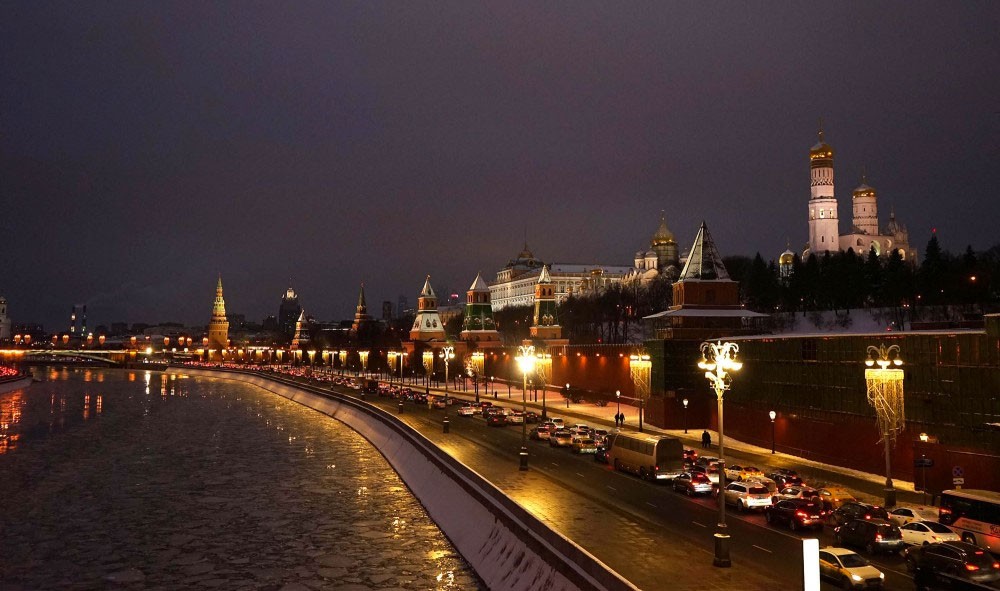
Unilateral lighting
Very narrow roads and one-way streets can take advantage of this option. Street lights are erected to be equal in height to the width of the road and then installed with equal intervals along one side of the road.
What is the height of different types of street lights?

LED street light
LED street lights mainly use light-emitting diodes (LED) as the primary light source technology. In practice, the LED light cluster is assembled with the LED panel and a heat sink to form one complete lighting fixture.
Its consumption rate and output determine the lifespan of a LED light compared to its initial design specification. Typically, if a LED light’s light output decreases beyond 30% of its initial output value, that is deliberated to have reached the end of its life span.
LED street lights are superior to other technologies like high-pressure sodium and metal halide by design.
That is because most LED street lights can output more luminescent energy while consuming less power than other fixtures.
There are two notable benefits to using LED lights, namely;
- Long and predictable lifespan. LED lights typically do not run out of power – they deteriorate slowly to a point where they must be changed.
- Accurate color rendering index. LED lights can accurately reproduce the colors of objects colors compared to ideal light sources. This ability helps drivers and passengers be safer as they quickly tell things apart.
The initial cost of purchasing LED street lights is very high. However, they are the most cost-effective and highest reward for money in the grand scheme.LED street lights are installed to be equivalent in height to the width of the road. Therefore, the street poles can distance at a ratio of 3-4 times the height of the street light poles.
That is because LED lights have a very high luminous energy efficiency that they don’t need to be closely clustered together.

Solar street light
Solar street lights are the most ecologically friendly lighting option regarding renewable energy. Street light lamps have solar panels mounted or fitted into the street light pole to recharge sunlight.
Most solar panels can routinely turn on and off by sensing the change in outdoor light using the solar panel voltage.
Also, solar panels vary in wattage and battery capacity. As such, while some solar street lights have the ability to power streets all night, others may only have a capacity to power on for only a duration of the most critical night hours.
In addition to a mounted solar panel, energy is converted from the friction people walk over kinetic tiles installed below ground in some fixtures. This additional energy is an excellent way to supplement the battery reserves in areas that do not receive enough hours of daylight sunlight.
Solar street light poles must be sturdy and support the extra weight of mounted solar panels against harsh weather. Solar street light poles typically range between 6 to 12 meters in height, depending on the width of the road and design placement along the road.

High-pressure sodium lamp
High-pressure sodium lamps are one of the most cost-effective and energy-efficient technologies in street lighting technology.
Due to the light contamination that comes with most street light technologies, pressure sodium lamps can be used as a safer yet more energy-efficient option in places near observatories and astronomical telescopes.
High-pressure sodium bulbs are made of metal and gasses inside the glass tube to produce a warm ambient light favored for street lighting. When first switched on, HPS bulbs emit a soft pinkish glow that intensifies to warm orange as the bulb heats up. HPS bulbs generate enough light to cover an area of 4.5 meters. This coverage can improve by erecting the bulbs on poles of a height of 5-7 meters.

Metal Halide lamps
Metal halide lamps emit light from an electric arc through gaseous mixtures of gases and metal halides. The glass tube contains a variety of bromine, iodine, and other compounds that improve the light efficiency and color rendering scale compared to earlier models of mercury vapor lamps.
Metal halide lamps can use in various settings such as car headlights, indoor and outdoor lighting, floodlights, and street lights. These lamps require the right fixtures to produce an excellent electrical ballast.
When switched on, metal halide lamps require a downtime between 1 to 10 minutes to warm up, depending on the weather. As a result, the light may take longer on winter or rainy days. The life span for these bulbs is typically between 15000 to 20000 hours.
Metal halide lamps have a high luminous efficiency while being cost-effective compared to other technologies like fluorescent bulbs. The height of metal halide lamps typically ranges between 5-8 meters as they require close spacing for even lighting.
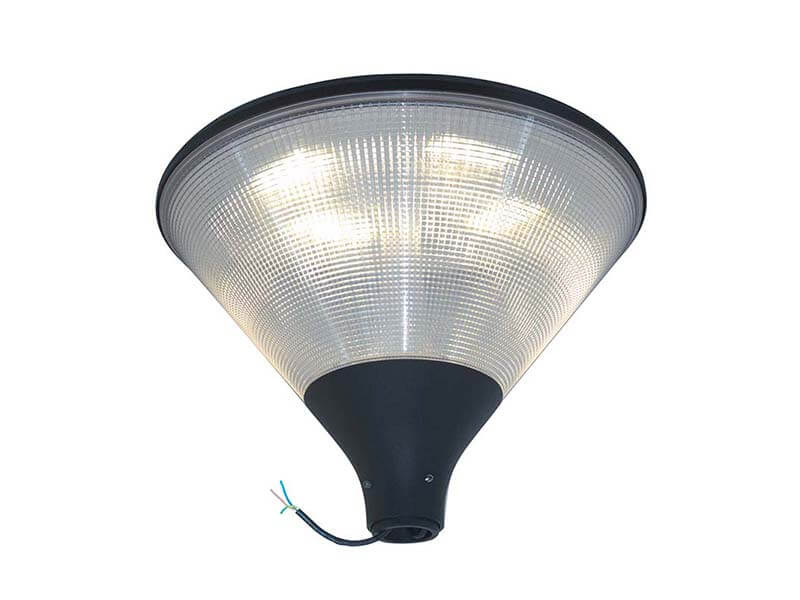
Incandescent light bulbs
Incandescent lights produce light by heating the wire filament until it glows to make light. Because of this technology, incandescent lights are no longer as popular as in the 19th century.
The first lamps had significant production costs involved as 90% of the energy produced by the bulb was in the form of heat energy. These bulbs also had other issues such as the filament burning out, bulb darkening, and many more.
Improvements such as the use of inert gas to prevent oxidation, the tungsten filament-a longer-lasting replacement of the original filament, and the use of halogen lamps to prevent bulb darkening have come up.
The incandescent arc lamp is an improved prototype of the original incandescent bulb as it struck the arc on a spherical bead electrode to produce light energy.
These bulbs had fewer operating costs and better protection against oxidation. Modern-day incandescent arc lamps are typically as high as garden lamps at the height of 6 meters or less and serve as pavement lights for pedestrians.
Incandescent lamps are susceptible to changes in voltage. However, small changes as low as 5% could potentially double the lifespan of an incandescent light bulb. Therefore, it is still possible to purchase incandescent light bulbs in many countries, although they are becoming obsolete.
What is the effect of the height of the street light on the angle of the light?
The height of a street light directly correlates to the range of illumination on the ground. That is derived from the Pythagoras theorem. That means the height of the street light must consider an angle of tilt of the light that can redistribute to the surrounding areas.
Street light poles have a general height ranging between 5-15 meters depending on the road. For example, it is common for small commercial back roads to find light street poles at an average elevation of 5-8meters, while on heavy traffic roads like highways, the height can quickly go up to 15metres.
However, this is not simply a matter of one size fits all guesswork. When discussing the acceptable height of street lights, different factors come into play, for example;
Width of the road
On wide roads, street lights do erect equally in height to the width of the road (W=H). In this case, if the width of a road is 10 meters, then the height of the light pole should be 10 meters. And the street lamp is placed in a “zigzag” shape on both sides of the road. The distance between each light pole and the next light pole is equal. The higher the street light, the greater the surface illuminated below.
Very high street lights are referred to as high-mast lights and are preferred on busy roads because;
- They illuminate a greater surface on the road.
- They cause minimal discomfort and disability glare to the drivers on the road. If the lights are at a great height compared to the cars on the street. The light source is out of reach of the driver’s eye-line. And thus drivers have sufficient illumination to light the path without suffering any discomfort.
- They have a minimal cost since fewer street lights are required over longer distances.
Equi-distance between streetlight poles
After considering the width of the road. Without affecting the brightness effect of the installation interval. Determining how much space should leave between two adjacent poles is also crucial.
The aim is to provide sufficient illumination on the road that is neither harsh, bright, or too little that navigation is impossible. On busy town roads, the distance between two street poles ranges between 20 to 50 meters.
This distance can shorten around T-junctions, crossroads, and pedestrian crossing points.
Height of cars on the road
Some minor back roads only accommodate small cars while other roads, e.g., highways and factory roads, regularly accommodate heavy-duty vehicles like trucks and trailers. Such roads must have street lights with a greater height to avoid collisions.
Power of street lights
Different street lights have different luminous energy outputs depending on the manufacturer’s quality standard and technology. Some typical power outputs are 30W,60W,120W, and 150W.
If a street light’s output power causes it to be too bright. Then the tilt angle must be carefully considered and altered. The street lights must be rotated at such an angle as to cover more area on the ground without directly hitting the driver’s eyes when driving.
That also implies that the height of the street light pole must be higher than 8 meters to escape the driver’s direct eye-line.
Traffic on the road
High traffic areas usually have designated pedestrian crossing points or no allowance for a pedestrian crossing at all. The laws enforced on a given road determine the speed limit of drivers on these roads. Depending on the height of the street light, should keep the advisable angle of tilt between 15 to 30 degrees. This range of angles allows for optimal illumination while reducing the chances of a discomfort glare on drivers.
Other factors to consider when installing street lights
The environment in which they are installed
The weather and climate are different across different continents and countries. In windy areas, street lights should set up to be sturdy and withstand the weather.
The poles should paint with a special coating to avoid saltwater corrosion in coastal areas. That also applies to stormy places.
Lights at a pedestrian crossing
Pedestrian crossing points are magnets for accidents, and thus extra care should be put into the street lights. For example, you shouldn’t spread the lights too far apart to keep a driver’s attention.
Depending on a given country’s driving orientation, for example, if the driver drives on the left side. The street lights should illuminate on the road’s opposite(left) side to draw attention to the road from a wider angle.
Maintenance costs
Street lighting curves a deep hole into every city’s maintenance budget. For this very reason, extra care should put into choosing the most cost-effective lighting solution that has fewer operating costs involved.
The world is transitioning from old technologies like incandescent light bulbs and advocating for more environmentally friendly solar and LED lights. That is because these options create value for money.
In conclusion, street lights are integral to road safety and should be taken very seriously.
The different placement and design scheme requirements should put into practice because once wrongly set up; streetlights can become a hazard instead of a road safety requirement.
Licensed professionals should install street lights after considering all the variables that play an integral part in street light placement.

